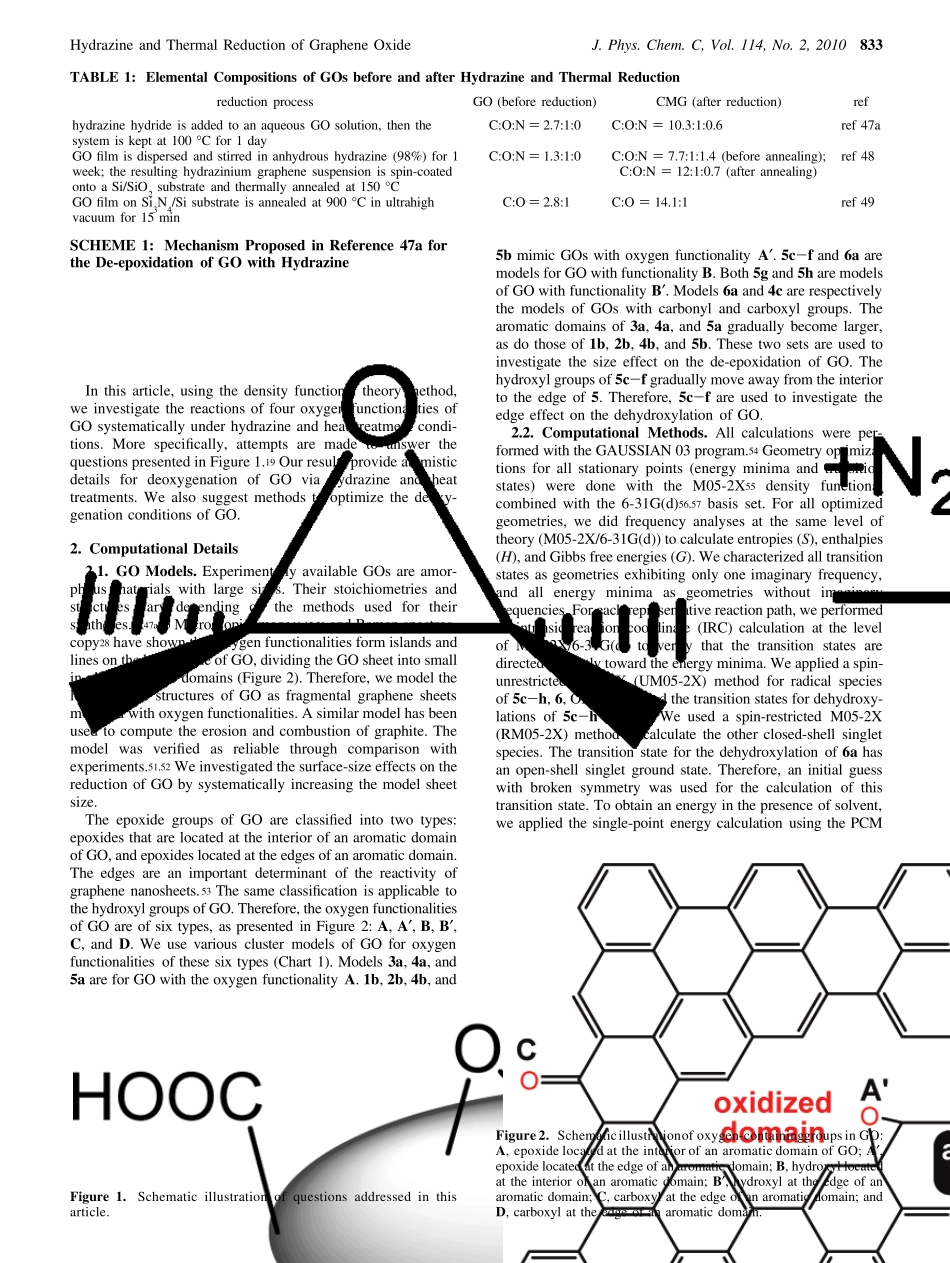Hydrazine and Thermal Reduction of Graphene Oxide: Reaction Mechanisms, ProductStructures, and Reaction DesignXingfa Gao,† Joonkyung Jang,‡ and Shigeru Nagase*,†Department of Theoretical and Computational Molecular Science, Institute for Molecular Science, Myodaiji,Okazaki 444-8585, Japan, and Department of Nanomaterials Engineering, Pusan National UniVersity,Miryang, 627-706, Republic of KoreaReceiVed: September 27, 2009The density functional theory method (M05-2X/6-31G(d)) was used to investigate reaction mechanisms fordeoxygenation of graphene oxides (GOs) with hydrazine or heat treatment. Three mechanisms were identifiedas reducing epoxide groups of GO with hydrazine as a reducing agent. No reaction path was found for thehydrazine-mediated reductions of the hydroxyl, carbonyl, and carboxyl groups of GO. We instead discoveredthe mechanisms for dehydroxylation, decarbonylation, and decarboxylation using heat treatment. The hydrazinede-epoxidation and thermal dehydroxylation of GO have opposite dependencies on the reaction temperature.In both reduction types, the oxygen functionalities attached to the interior of an aromatic domain in GO areremoved more easily, both kinetically and thermodynamically, than those attached at the edges of an aromaticdomain. The hydrazine-mediated reductions of epoxide groups at the edges are suspended by forming hydrazinoalcohols. We provide atomic-level elucidation for the deoxygenation of GO, characterize the product structures,and suggest how to optimize the reaction conditions further.1. IntroductionWhen sp2-carbon atoms are arranged into two-dimensionalfused hexagons, they form a single-atom-thick allotrope ofcarbon: graphene. Graphene has been known as the buildingblock of graphite for more than 60 years,1...


